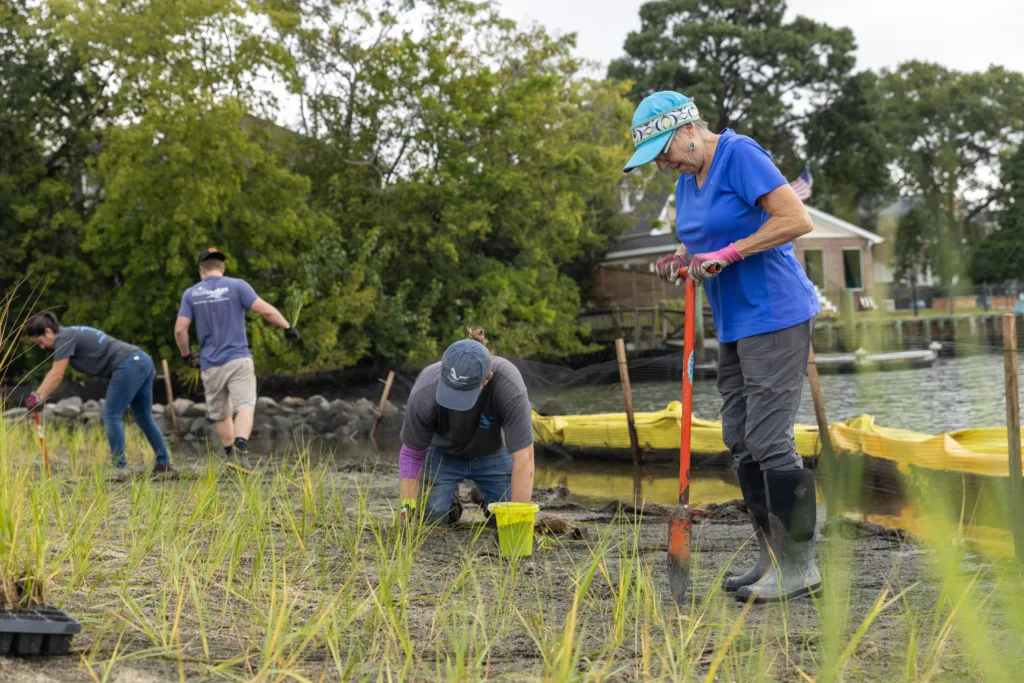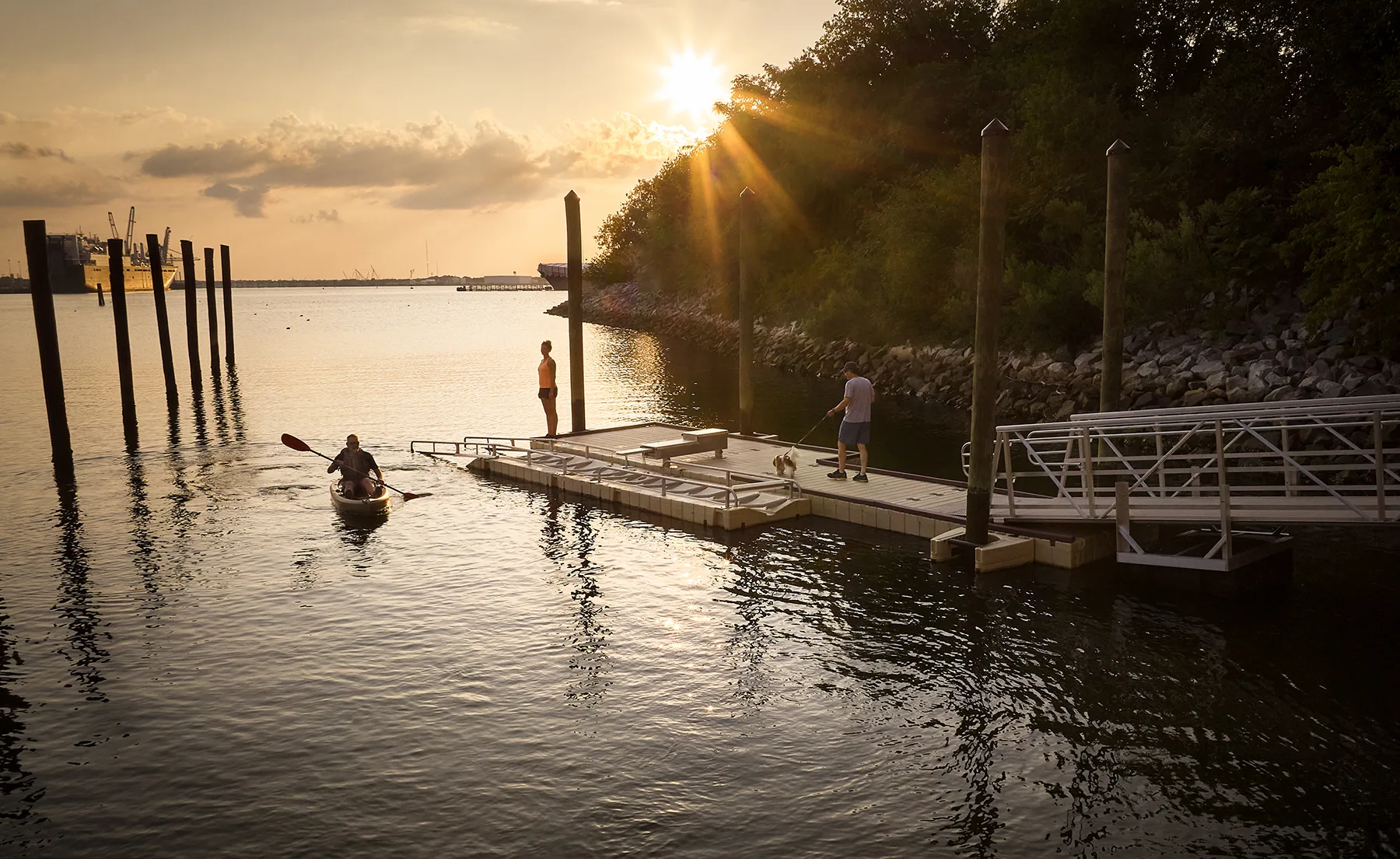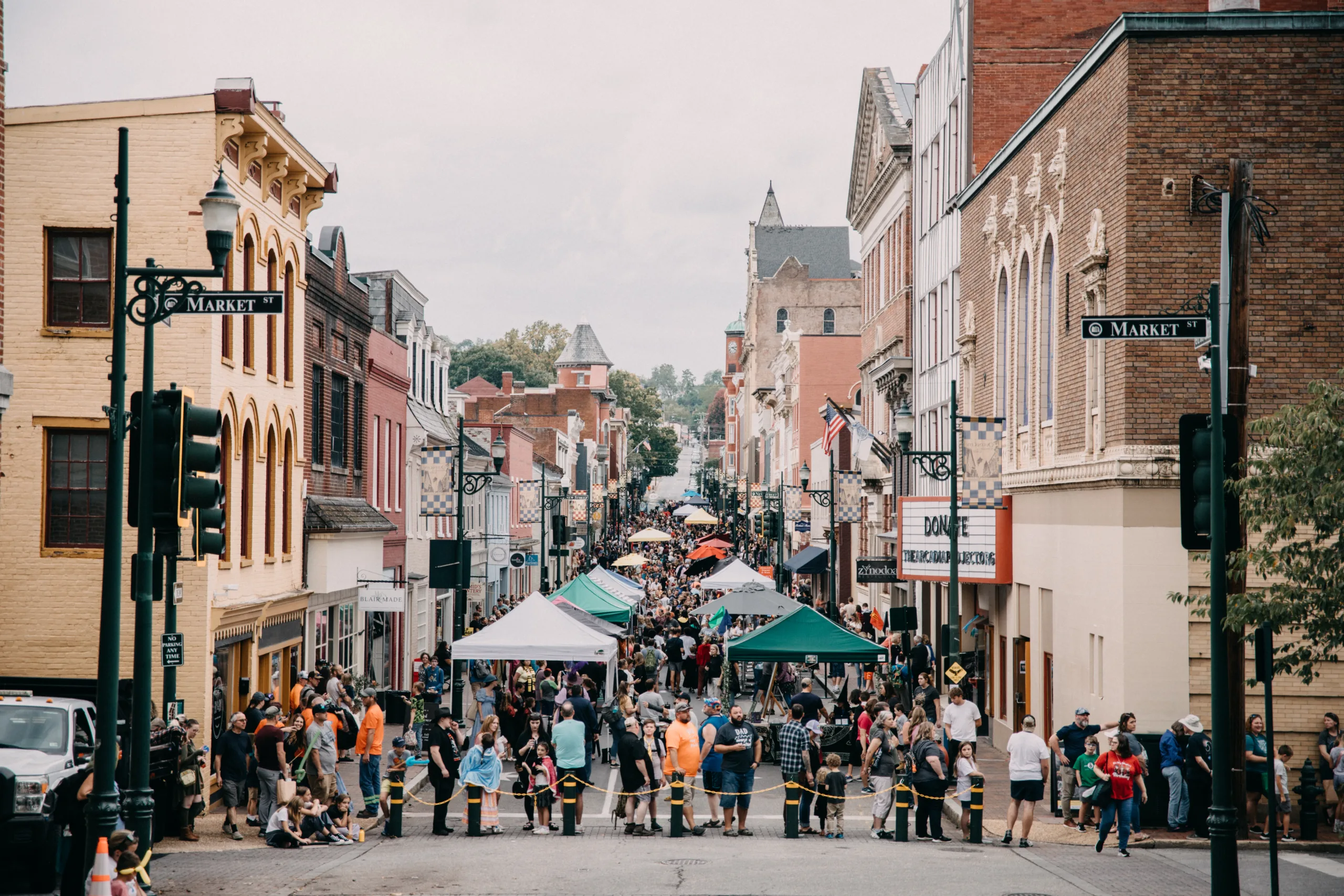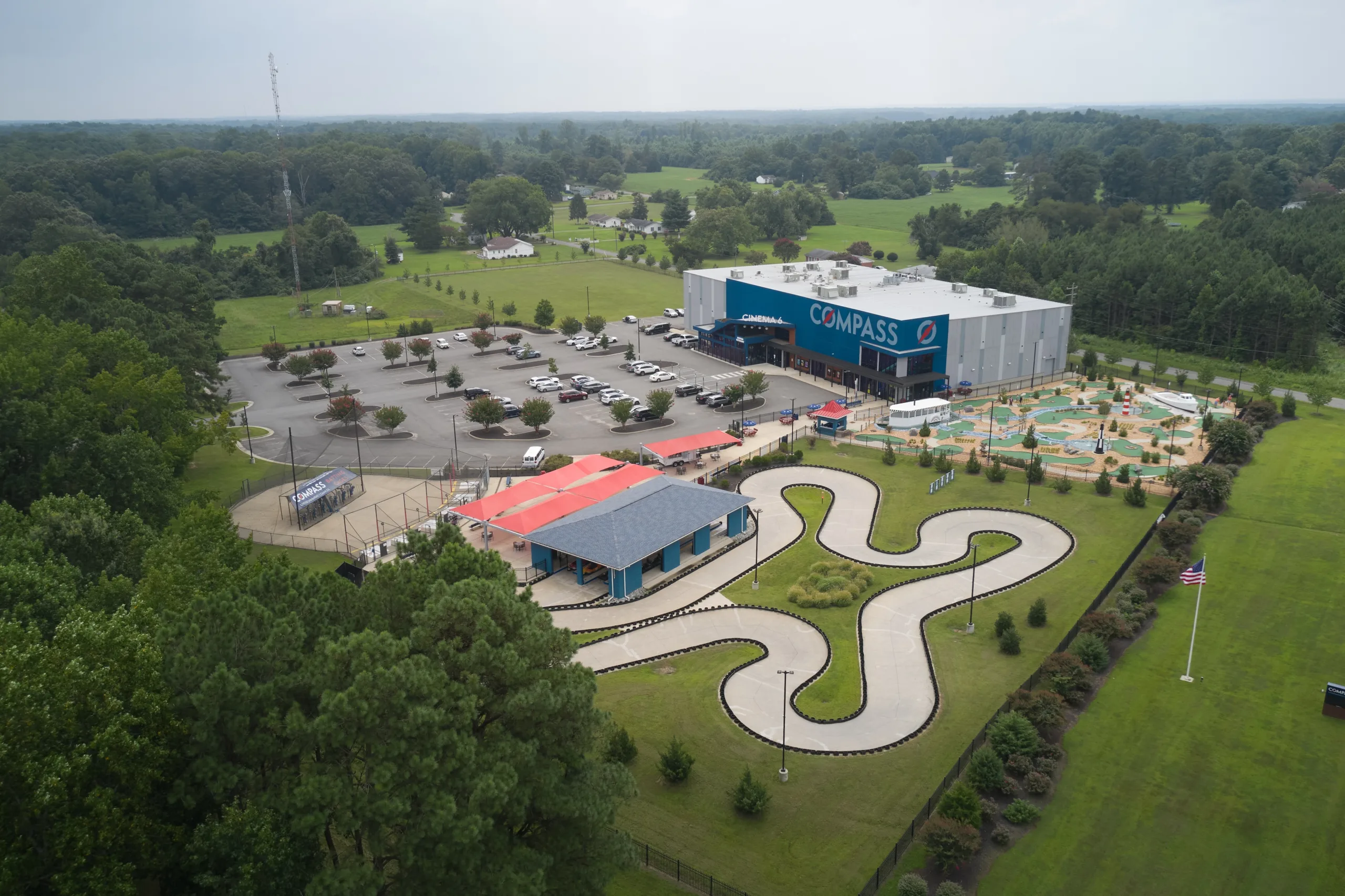A tiny fish called a mummichog was the canary in the coal mine. In the early 1990s, scientists discovered that 90 percent of the mummichogs harvested from a section of the Elizabeth River in Norfolk had precancerous lesions. The river and its tributaries were dying—choked by decades of pollution from industrial discharge and malfunctioning sewer lines, as well as lawn fertilizer, motor oil, pet waste, antifreeze, and kitchen grease leeching into the river from waterfront neighborhoods. The damage was severe, and the future looked bleak. Yet residences and businesses along with local, state, and federal economies are tied to the Elizabeth River in Tidewater and depend on its vitality. But this waterway was singled out as one of the most highly polluted bodies of water in the entire Bay watershed.
To combat the pollution in their backyards, a group of concerned residents met at a kitchen table in 1991 and formed the Elizabeth River Project. The mission? To restore the health of this historic urban river and create a cleaner, safer waterway for generations to come. Thirty-four years later, the tide has turned, and the Elizabeth River is thriving. Fish, dolphins, river otters, and birds are returning, wetlands are recovering, and water quality is improving. Even brown pelicans, once almost extinct, bob about the water’s surface once again. The nonprofit group continues to grow, expanding its mission to meet modern environmental challenges. Its current goals now include proactive steps to address sea level rise and a changing climate.
Symbolizing the Elizabeth River Project’s continuing progress is The Pru and Louis Ryan Resilience Lab, ERP’s new state-of-the-art headquarters, located on Knitting Mill Creek, a tributary of the Elizabeth River’s Lafayette branch. Louis Ryan was an attorney with Landmark Communications, founded by billionaire businessman and Norfolk native, Frank Batten.

Opened last summer, the Resilience Lab is the epitome of sustainability. From solar panels to high-efficiency lighting, the building is designed to have a reduced carbon footprint and a goal of net-zero energy use. This global model for coastal resilience is designed to teach the world’s coastal residents and businesses how to respond as sea levels rise.
Virginia’s former first lady and Norfolk resident, Pam Northam, is a longtime supporter of the project and now its education, government, and public relations associate. Northam is passionate about the new Resilience Lab and views it as an ideal way to engage and educate the community on sustainable living. “We want people to feel empowered and inspired by the building,” Northam says, noting that even small changes at home can be hugely significant.
She points out the energy-efficient air system, abundant natural light streaming in through windows, and carpets made from recycled fishing nets. Outside, the lab features floating docks, green roofs and walls, rainwater capture and beneficial reuse systems, and much more—all intended to minimize the building’s environmental impact.
What’s most unique about the Resilience Lab is that it’s been intentionally designed to be taken down and recycled. As water levels rise, a “planned retreat” will allow the river and its wetlands to retake the site, embracing nature’s rhythm instead of resisting it. In the meantime, the Resilience Lab will serve as a forward-thinking model of sustainability and energy conservation to businesses, residents, the region, and, ultimately, the world. ElizabethRiver.org

Great Blue Heron. Photo by Denis Maples

Volunteers planting wetland grasses.
Photo courtesy of The Pru and Louis Ryan Resilience Lab
Elizabeth’s Anatomy
- It was christened in 1608 by John Smith after Princess Elizabeth Stuart, daughter of the reigning King James I.
- It is 11.08 square miles and flows through Norfolk, Portsmouth, Chesapeake, and Virginia Beach with three branches—main, southern, and eastern.
- Due to its size, the river is a prominent military and commercial port facility for the Hampton Roads area.
- You can explore, walk, or bike the Elizabeth River Trail, a 10.5-mile waterfront urban trail, which hosts events year-round.
- Once a rare phenomenon, with the river’s newfound health, river otters are coming back. The ERP even launched the Otter Spotter, a program to track and protect the animals. They’ve had over 6,000 sightings in more than 13 years!
This article originally appeared in the August 2025 issue.









